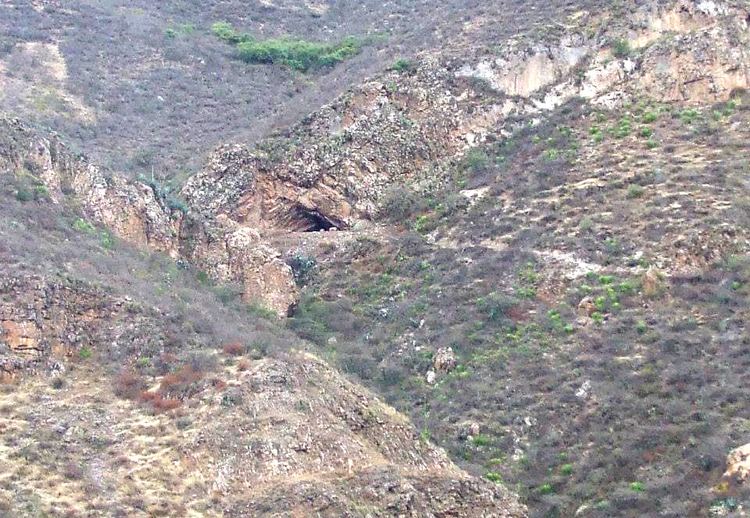 | ||
Periods Archaic, Early and Middle Horizon Similar Pikimachay, Toquepala Caves, Huaca Prieta, Callejón de Huaylas, Rumiqullqa | ||
Guitarrero cave in mancos peru
Guitarrero Cave is located in the Callejón de Huaylas valley in Yungay Province, in the Ancash region of Peru. The cave stands 50 m (160 ft) above Rio Santa and 2,580 m (8,460 ft) meters above sea level.
Contents
Archeological findings
Guitarrero Cave has evidence of human use around 8,000 BCE and possibly as early as 10,560 BCE. A human's mandible and teeth found in the cave have been carbon dated to 10,610 BCE.
Above all that, there were a series of Archaic period campfires, dated between 8,500 and 7,000 BCE. Wood, bone, antler and fiber cordage were among the artifacts that were recovered from the level, as well as willow leaf, tanged, lanceolate, and concave base Ichuna/Arcata projectile points. A single grinding slab and a bone flesher were also recovered from this part of the area.
Levels were included in the Early and Middle Horizon occupations, cist tombs, and wall paintings between about the 1000 BCE to 1000 CE.
In the 1960s, archeologists discovered artifacts in an extraordinary state of preservation at the site. Remarkably, textiles, wood and leather tools, and basketry have been preserved intact. Some of the evidence of early domesticated beans Phaseolus, chili, corn and other cultivars have been argued for Guitarrero.
Fiberwork found in the cave dates back over ten-thousand years – the earliest found in South America. The cave held utilitarian containers made by twisting, looping, and knotting plant fibers.
The people of Guitarrero Cave are possible ancestors of the Chavín culture.
Cultigens
Some of the earliest cultivated plants in South America have been found in the cave. They include:
